Robotics in Warehouse — Transforming Malaysian Warehouse Automation
Malaysian warehouses face unprecedented pressure from e-commerce growth, labor shortages, and customer demands for faster delivery. Traditional manual operations struggle to meet these challenges cost-effectively. Warehouse robotics—autonomous mobile robots, robotic picking systems, and intelligent automation—offer transformative solutions enabling Malaysian businesses to increase throughput, improve accuracy, reduce costs, and scale operations flexibly. As Industry 4.0 initiatives accelerate nationwide, robotics adoption has shifted from futuristic concept to competitive necessity for forward-thinking logistics and manufacturing operations.
What Does “Robotics in Warehouse” Actually Mean?
Warehouse robotics encompasses autonomous and semi-autonomous machines performing material handling, inventory management, and order fulfillment tasks with minimal human intervention. These intelligent systems combine mechanical components, sensors, artificial intelligence, and software creating self-operating equipment that moves materials, picks products, counts inventory, or assists human workers throughout warehouse operations.
What Kinds of Robots Are Used to Automate Warehouse Operations?
As warehouses evolve toward higher efficiency and automation, robotics has become a central component of smart logistics. Each type of warehouse robot is designed to handle specific tasks — from transporting pallets to picking items and managing inventory — all contributing to a faster, safer, and more precise operation.
Here are 6 types of warehouse robots and technologies transforming modern warehouse operations:
- Automated Guided Vehicles (AGVs): AGVs move materials along fixed paths using magnetic strips or tracks. They are ideal for structured environments with predictable workflows, such as pallet transport or repetitive material handling.
- Autonomous Mobile Robots (AMRs): AMRs navigate freely using sensors, cameras, and LiDAR, adapting to changing layouts and obstacles. They are highly flexible and ideal for dynamic warehouses where efficiency and scalability are key.
- Robotic Picking Systems: Equipped with vision systems and AI algorithms, these robots can identify, pick, and sort individual items with precision. They reduce human fatigue and enhance order accuracy in e-commerce and fulfillment centers.
- Collaborative Robots (Cobots): Cobots work safely alongside human operators to assist in tasks like packing, kitting, or assembly. They help bridge the gap between manual and fully automated workflows, improving overall productivity.
- Drones for Inventory Management: Warehouse drones equipped with barcode scanners or RFID readers can perform cycle counts and stock checks in large facilities, reducing the need for manual inventory audits.
- Conveyor and Sortation Robotics: Automated conveyor systems and robotic sorters streamline product flow between zones — from inbound to outbound — ensuring continuous, high-speed operations.
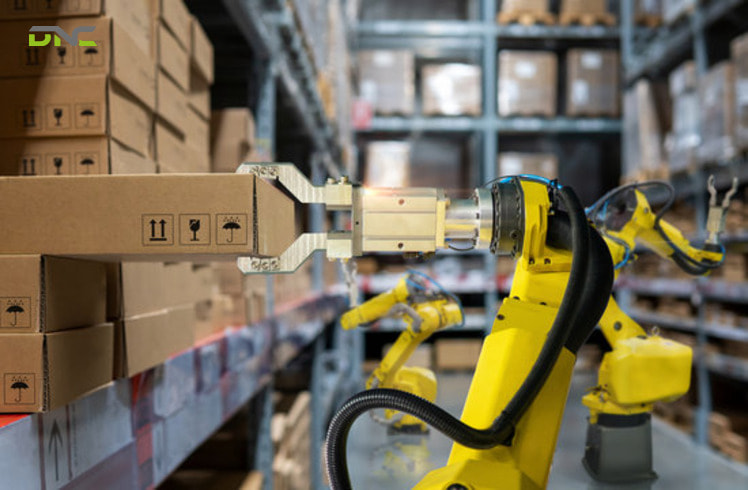
6 types of warehouse robots and technologies transforming modern warehouse operations
What Are the Benefits of Implementing Warehouse Robotics?
Adopting warehouse robotics is no longer a futuristic vision — it’s a proven strategy to enhance productivity, safety, and efficiency in today’s competitive logistics environment. Whether in manufacturing, distribution, or e-commerce, robots bring measurable improvements to daily warehouse operations.
- Increased Throughput and Order Fulfillment Speed: Robots operate continuously with high precision and speed, handling repetitive transport, picking, and sorting tasks faster than manual labor.
- Improved Accuracy and Reduced Errors: Automated systems powered by sensors, cameras, and AI algorithms significantly minimize human errors in order picking, inventory tracking, and stock counting.
- Lower Labor Dependency and Operational Costs: With labor shortages becoming a critical issue in Malaysia’s logistics and manufacturing sectors, warehouse robotics help fill the gap.
- Enhanced Workplace Safety and Ergonomics: Robots can handle heavy, repetitive, or hazardous tasks — from lifting bulky loads to operating in high-temperature or restricted areas.
- Scalability and Adaptability to Market Changes: Modern robotic systems are modular and flexible, allowing businesses to scale operations up or down depending on demand. Whether during peak seasons or expansion phases, robots can be easily integrated or reprogrammed to fit new workflows.
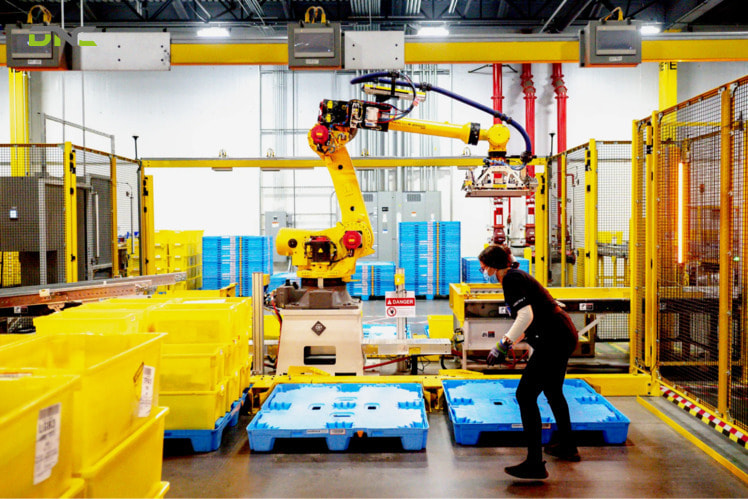
Benefits of Implementing Warehouse Robotics
What Are the Key Challenges and Considerations for Implementing Warehouse Robotics in Malaysia?
While warehouse robotics deliver clear operational benefits, companies in Malaysia must also address several practical and strategic challenges before full-scale deployment. Understanding these local considerations is crucial for successful implementation and sustainable ROI.
- Capital Cost, ROI Uncertainty, and Investment Challenges: Initial investment in robotics, automation software, and system integration can be substantial. Many Malaysian SMEs remain cautious due to uncertain ROI timelines and limited access to automation funding.
- Infrastructure Limitations – Floor Quality, Building Structure, and Lighting: Older warehouses may not be built to support automated operations. Uneven floors, poor lighting, or narrow aisles can affect robot navigation and sensor accuracy.
- Integration with Existing Systems (WMS, WCS, ERP, Legacy Infrastructure): Seamless data exchange between robots and existing software like WMS, WCS, or ERP systems is essential.
- Local Expertise, Maintenance, and Vendor Support: Robotics technology requires ongoing technical support, spare parts, and skilled engineers for maintenance. In Malaysia, a limited pool of trained automation technicians and dependence on overseas vendors can delay service response times.
- Regulatory Standards, Safety Certification, and Import Considerations: Compliance with Malaysian regulations — including DOSH safety standards, MITI import duties, and Industry 4.0 guidelines — is critical.
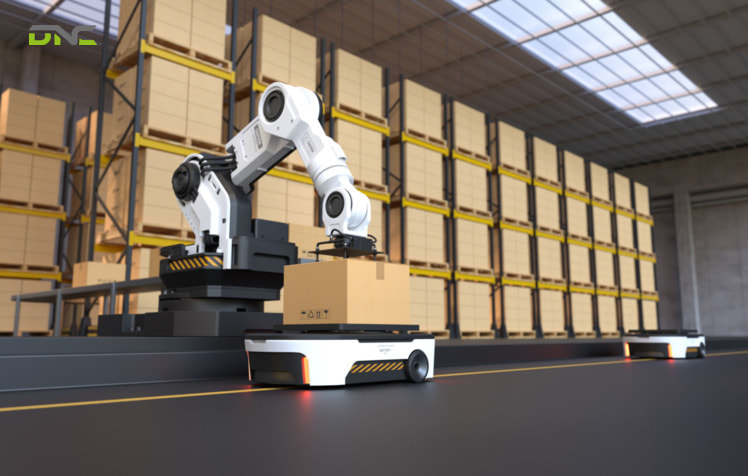
Challenges and Considerations for Implementing Warehouse Robotics in Malaysia
How Can Businesses Plan and Deploy Warehouse Robotics Successfully?
Implementing warehouse robotics is a transformative step that requires careful planning, technical readiness, and strategic alignment with business goals. A structured approach helps minimize risks, control costs, and ensure the new system delivers real operational value.
- Conduct a Readiness Assessment — Workflow, Inventory, Layout, and SKU Profiles: Before automation begins, companies should analyze existing warehouse operations — including material flow, storage zones, and SKU velocity.
- Select the Right Robotics Technology: Not all robots serve the same purpose. AGVs and AMRs are ideal for goods transport, robotic arms excel in picking and palletizing, while drones or cobots can assist in stocktaking and collaborative tasks.
- Implement in Phases and Run Pilot Projects: Instead of automating the entire warehouse at once, start with small-scale pilot zones to test system performance and fine-tune workflows. Gradual rollout reduces operational disruption and allows teams to adapt to new technology confidently.
- Establish a Strong Data and Software Backbone: Robotics deployment must be backed by robust systems — integrating WMS, WCS, and MES for seamless coordination. Real-time data analytics, performance dashboards, and AI-driven insights enable predictive maintenance and continuous improvement.
- Invest in Training, Change Management, and Continuous Optimization: Successful automation is not just about machines — it’s about people and processes. Staff training, clear communication, and culture shift toward data-driven operations are key.
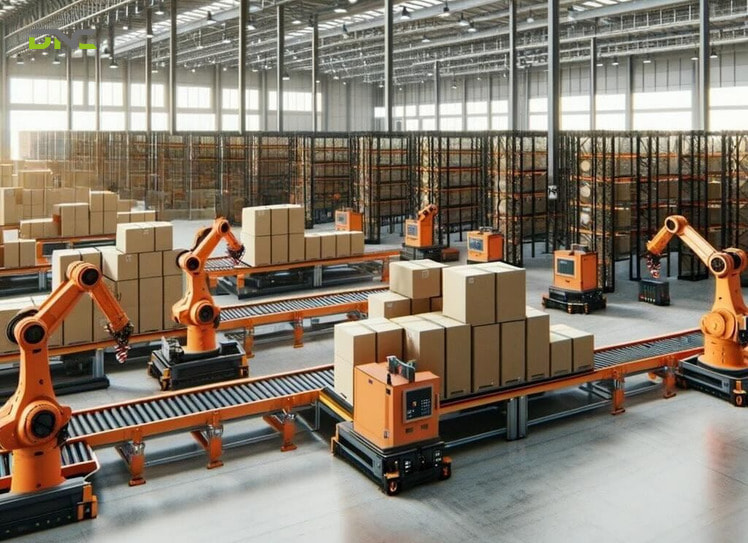
Conduct a Readiness Assessment — Workflow, Inventory, Layout, and SKU Profiles
FAQ: Robotics in Warehouse
1. Are warehouse robotics suitable for small or SME warehouses?
Yes. Robotics are no longer limited to large, high-volume distribution centers. Many compact and modular solutions — such as AMRs (Autonomous Mobile Robots) or collaborative picking robots — are designed specifically for SMEs. They can be scaled up as operations grow, helping smaller warehouses improve efficiency without major infrastructure changes.
2. What is the typical initial investment cost?
The investment depends on warehouse size, automation level, and system complexity. A basic robotic transport setup may start from a few hundred thousand ringgit, while full automation (including AS/RS, robotic picking, and WMS integration) can reach higher budgets. DNC Automation offers phased deployment plans to ensure ROI alignment and financial flexibility.
3. How long does it take to deploy a warehouse robotics system?
Implementation time varies based on project scope. A small pilot may take 2–3 months, while larger, fully integrated systems can require 6–12 months from design to commissioning. Early planning and collaboration with an experienced integrator like DNC Automation significantly shorten deployment time.
4. How can we ensure stable operation and easy maintenance?
Routine preventive maintenance, system monitoring, and real-time diagnostics help maintain stability. DNC Automation provides local technical support, spare parts supply, and performance analytics, ensuring that robotic systems operate efficiently and downtime is minimized.
Why Choose DNC Automation for Your Warehouse Robotics Solutions?
With over 10 years of experience in factory and warehouse automation, DNC Automation delivers reliable, high-performance robotics solutions tailored to each client’s needs.
- End-to-end integration – from AGV/AMR and robotic picking to WMS/WCS connectivity.
- Customized & scalable systems that grow with your operations.
- Local engineering support across Malaysia for faster service and maintenance.
- Proven ROI through smart design, phased deployment, and performance optimization.
- 15 views
- 0 Comment



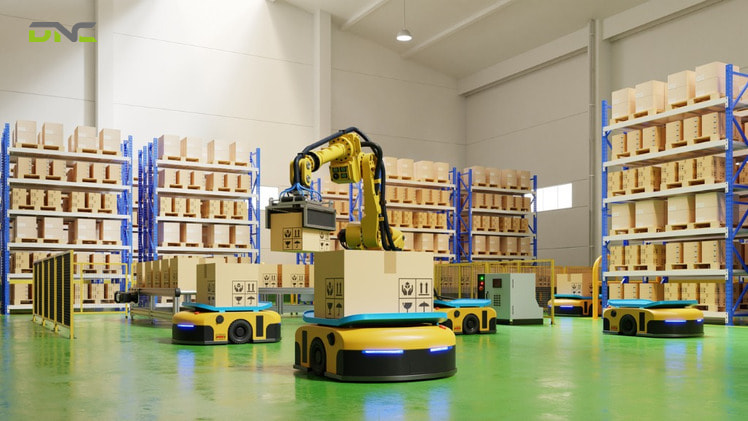
Recent Comments